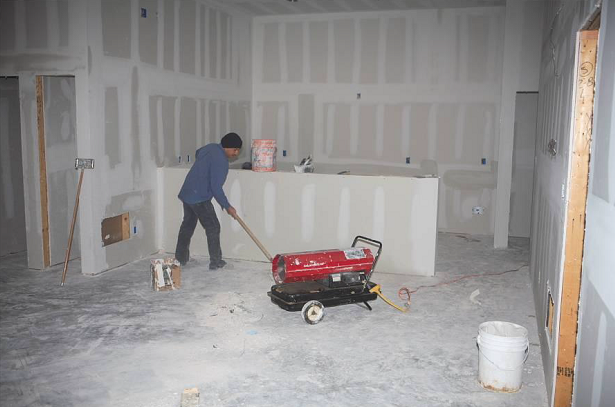Is This a Safe Way to Use an Indoor Heater?

Can you spot the 3 safety hazards?

1. The electrical wire to the space heater is strung across the doorway and poses a tripping hazard.
2. The worker isn’t wearing a dust mask to protect himself—let’s hope the dust particles he’s breathing in don’t contain asbestos or some other toxic substance.
3. Emissions from the space heater might expose the worker to the risk of carbon monoxide poisoning.
Moral: Although all 3 are serious, let’s concentrate on the carbon monoxide poisoning hazard.
Carbon Monoxide Poisoning
What’s at Stake
3 Reasons to Pay Attention
- Because it’s invisible, odorless and poisonous, carbon monoxide is the leading cause of accidental poisoning deaths in the U.S.
- Although most cases occur at home, more than 1 in 10 accidental carbon monoxide poisoning deaths occur in the workplace
- Space heaters like the one in the above photograph may emit carbon monoxide that can make you a poisoning fatality
Recognize the Danger Signs
5 Indications of Carbon Monoxide Poisoning
You can’t see it.
You can’t smell it.
But you can feel it before it causes you to pass out and maybe die. Be tuned in to the following signs and symptoms of carbon monoxide poisoning:
1. Headaches
2. Weakness
3. Dizziness
4. Nausea
5. Rapid or Irregular Heartbeat
8 Ways to Protect Yourself, Your Family & Your Co-Workers from Carbon Monoxide
- Don’t use indoor space heaters unless and until you can verify that they won’t subject you to carbon monoxide poisoning dangers
- Make sure space heaters and other carbon monoxide emitting equipment is well maintained and used according to manufacturer’s instructions
- Don’t use gasoline- or propane-powered equipment in poorly ventilated areas (unless you’re wearing a respirator)
- Notify your supervisor if you experience any carbon monoxide poisoning symptoms
- If you get sick, tell your doctor you might have been exposed to carbon monoxide
- Make sure family members and co-workers recognize the signs and symptoms of carbon monoxide poisoning
- If you feel symptoms, avoid overexertion and immediately leave the area
- If you think somebody is suffering from carbon monoxide poisoning:
- Move the victim to an open area where there’s fresh air
- Call 911
- Administer cardiopulmonary resuscitation if the victim stops breathing (and you’re qualified to give CPR)